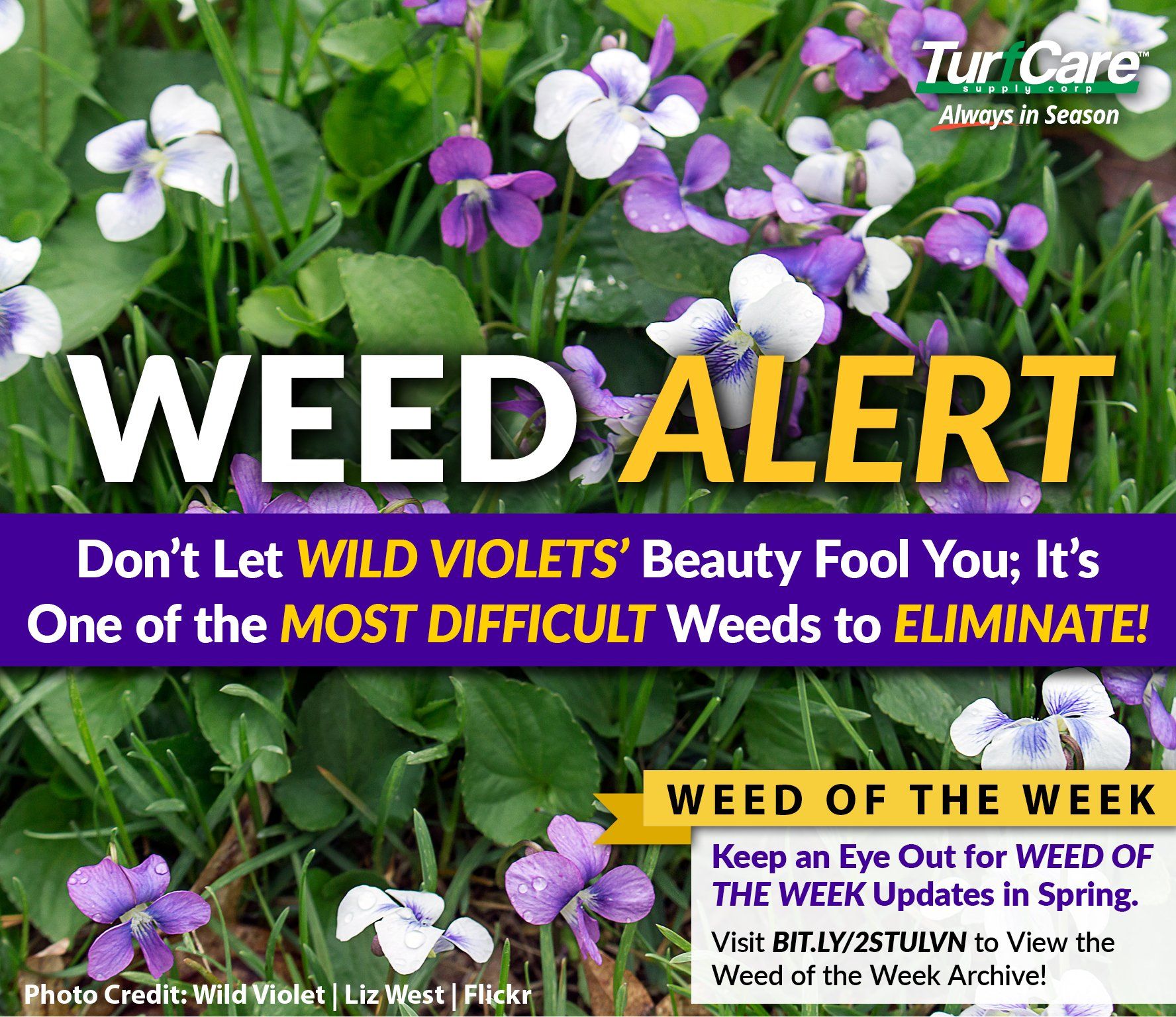Weed Alert: Don’t Let WILD VIOLETS’ Beauty Fool You; It’s One of the MOST DIFFICULT Weeds to ELIMINATE!

ALERT! Have you been seeing purple pedals appearing around your lawn recently? We’ve all had those weeds that you’re tempted to keep around because of their beauty, but don’t be fooled by the innocent looks of the invasive Wild Violet. If left untreated, the Wild Violet can take root and become one of your turfs biggest predators. Although the Wild Violet wears a mask of beauty, once established, this weed will be invading your lawn for years…and years…and years. Break the cycle and cut your ties with the Wild Violet weed before its too late. Discovering how to identify it, manage it and eliminate it today.
TYPE Wild Violet is a winter annual or perennial broadleaf weed that typically emerges in early spring and persists through the summer. It is particularly hardy, and tends to last an average of two growing seasons. This weed grows in clumps, with unchecked foliar growth topping out around 4-6 inches. Wild violet has a well-developed taproot which makes it more resistant to conventional herbicides than other common turf weeds.
HOW TO IDENTITY
Wild Violet consists of a network of rhizomes (horizontal running stems below the soil surface) that produce small, heart-shaped leaves with a shiny/waxy cuticle. Named after their flower’s intense violet color, its flowers can also be white or yellow. Each flower consists of 5 petals, and when fanned out, is roughly the same size as each leaf. These plants prefer cooler, shady habitats and are commonly found invading turf near forest and garden borders.
WHERE IT GROW
Wild violet is most commonly found on forest floors which receive filtered sunlight, but is well adapted to a variety of turf climates. These plants prefer cooler, shady habitats and usually persist in areas where managed turf meets a forest line, tree line, or garden border.
GROWING SEASON
With leaves emerging as early as March, flowers typically emerge by mid-May and continue blooming throughout the summer. Its well established tap root and waxy cuticle help defend against late spring frosts.
HOW TO MANAGE
Wild violet typically takes several growing seasons to establish, and once it does, it is one of the most difficult weeds to eliminate. While pre-emergent control is effective against germinating seeds, post-emergent control is necessary to eliminate well-established patches of these weeds. Wild violet is particularly resistant to single applications of foliar herbicides due to its thick, waxy cuticle, therefore multiple applications may be necessary to kill it. The use of ‘spreader sticker’ products may enhance the herbicide’s ability to adhere to the leaves. It has been well established that while spring and summer herbicide applications will kill the leaves, the plant will simply grow back again the following spring. Because of its well-established tap root and complex rhizome network, the best time to apply herbicides is late summer/early fall, when the plant is transporting sugars from the leaves to the roots. A number of broad spectrum post-emergent herbicides in conjunction with multiple timely applications are effective against wild violet.
Overall, the best prevention method for wild violet and any invasive weed is to maintain healthy, dense turf with a strong root system by adopting a regular lawn care routine including fertilization , soil amendments , proper mowing and watering as well as aeration and thatch management practices.
For professional fertilizers, humic and AMP-XC™ enriched products available, please visit TurfCare’s online Product Catalog.
For green industry professionals or others interested in ordering Turfcare products, please contact our Customer Service to find a distributor near you.
The TURFReport Highlights:
Additional Articles and Insights
















